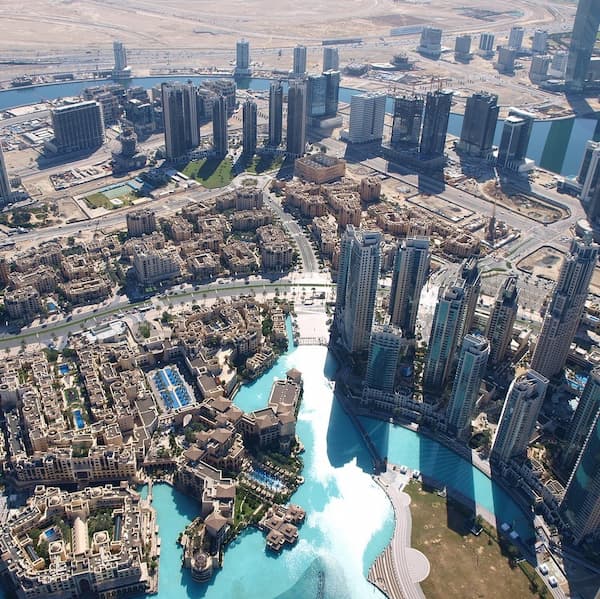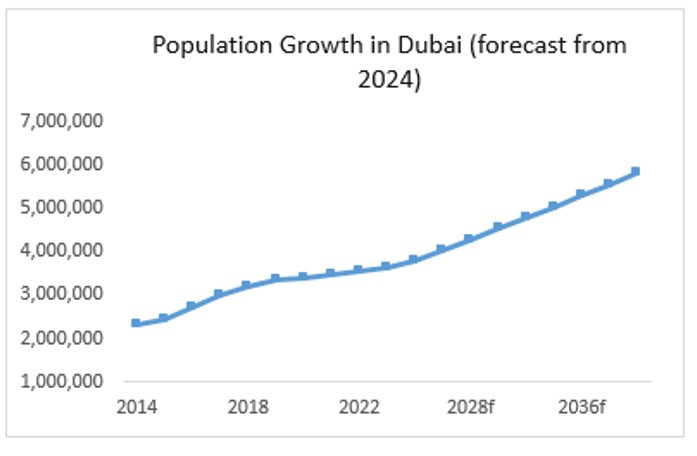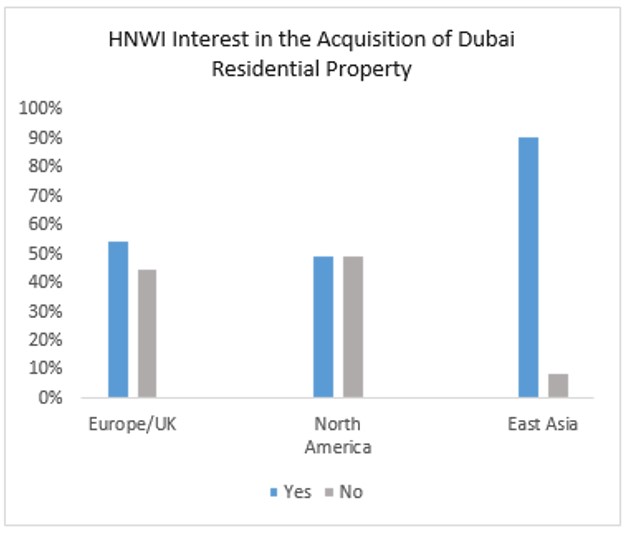Real Estate
Dubai D33: Agenda Of Growth – Market Overview, Long-Term Outlook

Property prices have surged in Dubai, fuelled by intense demand for a variety of reasons. The author of this article examines the state of the market, and what the future holds.
The following article about the Dubai real estate market
comes from Christian Atzert. Atzert has been engaged in the
Dubai property market since 2005 as an independent consultant,
advising institutional and private clients on asset acquisitions,
legal structuring as well as property management matters. He
heads Dubai-based PPP Advisors.

The editors of this news service are pleased to share these
comments; the usual disclaimers apply about views of outside
contributors. To jump into the debate, email tom.burroughes@wealthbriefing.com
Property prices in the Dubai market have increased substantially
over the last three years, prompting some commentators to
frivolously announce the onset of a new bubble.
However, a spectacular GDP growth of 7.6 per cent in 2022 paired
with continued significant inflows of people and investment
capital may lead to other conclusions.
This article therefore aims to put the current market metrics
into a broader perspective and present an outlook on the
long-term developments, specifically in light of Dubai`s goals
announced under the D33 development strategy.
Relief rally followed sell-off
Firstly, it is noteworthy that the present property cycle has
started out from an extremely low baseline, following six years
of gradually receding valuations, further exacerbated by a panic
sell-off at the onset of Covid-19.
Intense demand for prime property has pushed prices in the luxury
segment upward by 112 per cent since January 2020. While this may
seem alarming at first glance, Dubai`s prime residential property
is far from expensive compared with its peers.
According to Knight Frank et al, Dubai is the 16th most
affordable luxury market in the world at present. Dubai prime
residential properties cost an average of $9.470 per square
metre, only around a third of the prices demanded in London, New
York or Singapore.
Plan D33 – Dubai`s quest to rise to the
top
Plan D33, a Dubai government roadmap and economic plan recently
unveiled is geared at – inter alia – establishing Dubai
within the top four of the world`s leading financial hubs
(presently number 22) alongside London, New York and Singapore by
the year 2033.
Besides aiming to become a top dog in financial centres, Plan D33
entails further targets with respect to Dubai`s economic
performance:
- increase foreign direct investment (FDI) to $16.3 billion
per annum (+87 per cent);
- increase its foreign trade to $7 trillion (+80 per cent,
decade on decade); and
- increase gross domestic product (GDP) by 36 per cent
decade on decade.
While this undertaking may seem ambitious at first, Dubai has an
impressive track record of achieving similar feats.
Top-tier banks, family offices, hedge funds and other big players
within the financial realm are already setting up shop in Dubai,
the continuation of which will inevitably further nourish the
immigration of high-profile employees, entrepreneurs and
investors catering to and feeding off the financial
ecosystem.
PPP Advisors strongly believe that (luxury) property
valuations in Dubai will – during the course of this process –
further converge with those seen in other leading financial
hubs.
Relative value compared with peer cities
Meanwhile, luxury property in Dubai is presently valued at 33 per
cent less compared with such assets in Berlin, Germany`s capital
which is already placed in the lower third of the ranking for the
world`s most expensive cities.
Considering a shortage of prime residential property under
construction in Dubai and a continued strong demand, the firm
expects the upward trajectory to remain intact for the
foreseeable future, albeit at a slower pace.

With prime waterfront properties such as Palm Jumeirah and
Jumeirah Bay being limited, we see a trickling down/diversion of
prime property demand into inland high-end communities such as
Jumeirah Islands, Jumeirah Golf Estates, Tilal al Ghaf and Al
Barari.
Common denominators amongst the former are modern, high-quality
apartments and villas with ample living spaces, top-notch
community services and infrastructure complemented by excellent
connectivity.
Off plan vs secondary market – no signs
of overheating
We have stated previously and the presently available transaction
data proves that Dubai`s third market cycle is characterised by a
dominance in real demand of end users and second-home
buyers.
This was profoundly different in 2009, on the eve of the
global financial crisis and preceding the stark correction in
Dubai`s property market. At that time, the off-plan segment was
dominating secondary market transactions, representing 61 per
cent of all property sales. Whereas development activity has
indeed picked up in the recent years on the back of returning
demand and the influx of expats, 2022 saw a proportion of
only 44 per cent of off-plan sales against 54 per cent in
secondary market transactions, a figure in line with the 10-year
average.
Stability as a new paradigm
Without a doubt, however, the dominance of real property demand
and its stability is a rather new phenomenon in Dubai`s
marketplace.
While Dubai had been experiencing a series of economic cycles
characterised by high volatility in population, economic output
and – in turn – property prices, the Emirate`s policies with
respect to visa and company ownership regulations seem to have
fundamentally transformed the demand metrics.
Further supported by a more stable political environment in the
greater MENA region and combined with political and economic
turmoil in European and other First World countries, expats are
more likely to call Dubai their home for much longer than before,
if not until retirement or even beyond.
At the same time, a number of factors such as Dubai`s early
reopening after the pandemic and the UAE`s progressing
integration into the BRICS group of countries is likely to have
attracted a sizeable number of new investors and immigrants from
practically new source markets, namely the US and Canada.
Remarkably, but certainly due to the factors mentioned above,
Dubai has not seen a slowdown in economic activity like the
European and North American economies.
As a result, Dubai`s real estate market is increasingly
exhibiting characteristics of a mature market, showing stability
in demand and supply, leading to a higher resilience against
exogenous shocks (i.e. rising interest rates).
International survey amongst HNW individuals with
remarkable results
A worldwide survey, recently conducted by Knight Frank amongst
high net worth individuals, has prompted some eye-opening
insights into the strong appetite for Dubai properties within
this cash-rich clientele.

Specifically, 90 per cent of the respondents from East Asia have
expressed an interest in investing into residential property in
Dubai while their peers from Europe/the UK (55 per cent) as well
as North America (50 per cent) have also exhibited a strong
appetite for Dubai properties. Some 40 per cent of the HNW
individuals stated that their purchase would be purely for
personal or second-home use while 60 per cent would see their
acquisition as an investment. It is an obvious assumption and
noteworthy therefore that a substantial percentage of properties
purchased by this buyers' group would not be made available in
Dubai`s rental market.
We have reason to believe that the tendency of a weaker US dollar
will increase the budgets (denominated in dollar/Dirham) and
possibly accelerate the decision-making of investors towards
their property acquisition within the Asian and European
jurisdictions, thereby driving more capital into the Dubai
market.
Conclusion
On the back of forward-looking policymaking by the government
combined with favourable geopolitical shifts and notably a weaker
dollar, Dubai`s growth is accelerating, progressing on its path
to evolve into one of the world`s leading business, finance and
tourism hubs.
Despite the recent price hikes, we see substantial further
upwards potential if Dubai`s game plan is to play out over the
course of the coming decade.
Moreover, as properties in tier-2 locations and qualities have
only undergone a fraction of the price appreciation compared with
the high-end segment, we see significant investment opportunities
to be seized by smart investors.
To contact the author, email c.atzert@ppp-advisors.com